
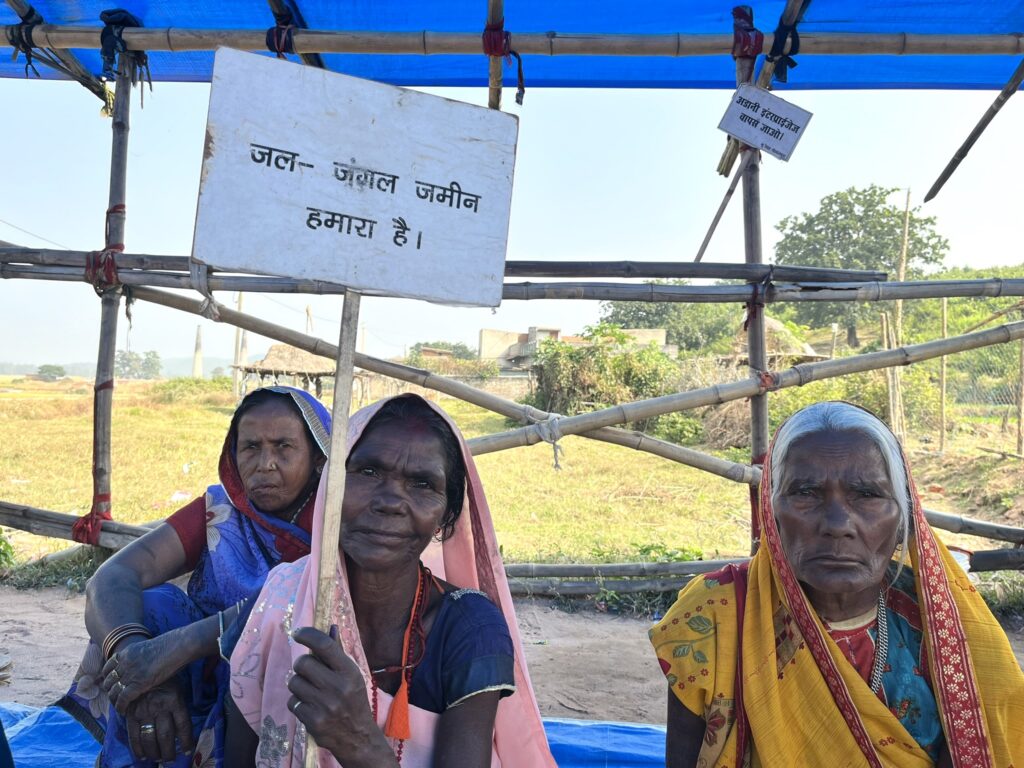
In the coal-rich landscape of India’s Jharkhand, a small village called Gondalpara has become a battleground against corporate land acquisition. With a defiant sign declaring “No coal company, authority, or worker is allowed here,” the villagers of Gondalpara have been staging an extraordinary protest for two years against the mining giant, Adani Enterprises, asserting that the land is not for sale.
However, the land has already been sold, at least on paper, to the coal mining giant—513 hectares, including 40% of forest land and another 40% of tenancy land. It was signed away without the local people’s consent. The government paints this mining venture as a move towards energy security and India’s development. But the agriculture-dependent villagers have resolved to fight for their slice of land in the dust-laden district of Hazaribagh. They say they have seen how mining razed homes and forests, and scattered communities who lost land and livelihood. “We can live without electricity, but we cannot live without food,” said Devnath Mahto, who has lived in Gondalpara for seven decades and now sits at the protest site.
This standoff in Gondalpara represents a critical flashpoint in India’s development model, where energy security through coal extraction directly threatens food security for farming communities and tribal land rights. The villagers’ defiance highlights the human cost of policies that prioritise corporate interests and industrial growth across resource-rich tribal regions. This dispossession is not incidental, it stems from laws that have given precedence to extraction over people’s rights.
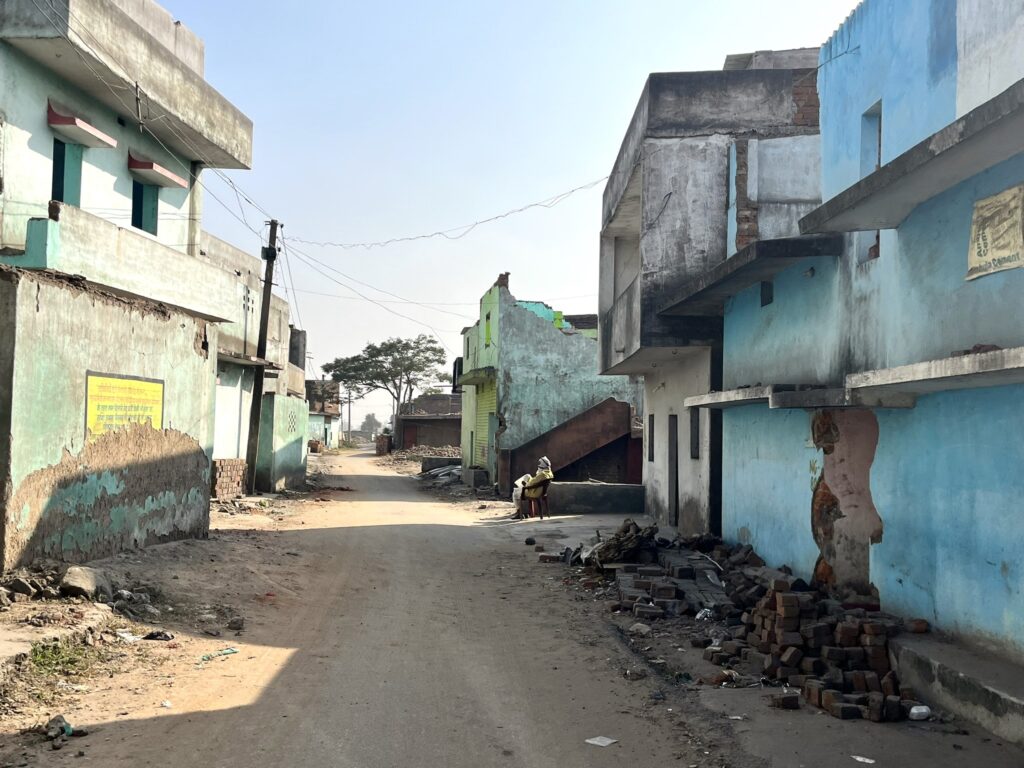
Legal frameworks enabling land grabs
The Coal Bearing Areas (Acquisition and Development) Act, 1957 (CBAA) gives the central government unchecked power to acquire land for coal mining without requiring the consent of the affected population. The Chotanagpur Tenancy Act, 1908 (CNTA) and Santhal Parganas Tenancy Act (SPTA) were enacted to safeguard tribal land rights by prohibiting transfers to non-tribals. However, state policies such as the Jharkhand Industrial Policy of 2001 have weakened these protections through controversial mechanisms. The policy created a high-power committee to review the “applicability” and “relevance” of the CBAA and CNTA, contradicting the Supreme Court’s “Samata” judgment that banned tribal land transfers for private industrial purposes in scheduled areas. This policy also facilitated corporate access to tribal lands through land leasing arrangements instead of ownership.
Additionally, the Panchayat (Extension to Scheduled Areas) Act, 1996 (PESA), which mandates tribal consultation before land acquisition, has been repeatedly ignored in Jharkhand’s mining projects. The CBAA overrides local governance structures and protective laws such as the CNTA, SPTA, and PESA. It allows the state to survey, classify, and forcibly acquire land without public consent, much like colonial-era land laws that reshaped entire regions for British coal enterprises.
The CBAA’s compensation mechanisms reduce displacement to a mere financial transaction, disregarding indigenous communities’ deep ties to their land and occupational displacement. Kuntala Lahiri-Dutt, in her book The Coal Nation: Histories, Ecologies and Politics of Coal in India, reveals how India continued colonial extractive practices long after independence, merely shifting control from foreign entities to domestic state-capitalist frameworks like Coal India Limited (CIL), without meaningfully addressing tribal land rights.
The Moitra Coal Mining Project in Barkagaon exemplifies controversial displacement tactics. The government invoked the “emergency clause” under the Land Acquisition Act to enable land seizure without proper consultation or completed compensation. This triggered widespread local protests. Despite this, the project advanced, disregarding PESA’s requirements for tribal community consent in land acquisitions. Courts have emphasised that this emergency provision requires genuine urgency, yet governments continue to deploy it liberally in cases like Barkagaon.
Standoff in Gondalpara
The Gondalpara Opencast Coal Mine spans five villages in the Barkagaon tehsil of Hazaribagh district. It was allotted to Adani Enterprises Limited in 2020, as part of a commercial mining push initiated by the prime minister Narendra Modi-led government. Located 35 kilometres from Hazaribagh town, the region is home to fertile farmland, forests, and a diverse ecosystem, where agriculture is the primary livelihood. As much as 40% of the communities in the area include tribal groups such as the Santhals, Birhors, and Mundas; Mahtos and Yadavs who belong to the Other Backward Classes (OBC) category; as well as Dalits and Muslims.
The Gondalpara coal block poses a severe threat to local livelihoods, with the project expected to generate 229 million tonnes of solid waste. The region’s fertile farmland produces crops like rice, sugarcane, wheat, and mustard, while community land is used for grazing and firewood collection. However, the gram panchayat and affected villagers were not consulted before the land allocation for mining. Nirmal Ram Bahua, a panchayat member, said the villagers never had a meeting with the authorities. “These private companies are making decisions on their own. But no action has been taken, and no compensation has been given. These companies are operating without any official permission.”
The villagers of Gondalpara grew alarmed about the planned mining project after witnessing the deterioration of neighbouring communities. Mining-affected villages across Hazaribagh district—including Barkagaon, Churchu, Dadi, and Keredari—form a visible corridor of displacement, water pollution, and agricultural devastation. In these areas, companies secured land acquisition approvals from state authorities while bypassing mandatory gram sabha (village council) consultations, a pattern that residents say would repeat itself in Gondalpara.
Further, Locals from previously affected areas report that compensation amounts were unilaterally determined by the companies, falling well below adequate value. By the time residents recognised the inadequacy, their eviction was already underway.
Gondalpara villagers first learned of their land acquisition through media reports, instead of official communications. Upon approaching the gram sabha, they discovered the government had approved the project without any community consultation. Officials subsequently failed to meet with concerned residents, leading to the current protest. Villagers are also unaware of the actual compensation amount as no discussions have been held regarding the matter either, they said. Despite the villagers’ attempts to engage in dialogue, they claim Adani representatives have not participated meaningfully and have instead used intimidation tactics, strengthening local resolve to continue their sit-in demonstration and stop the mine from starting.
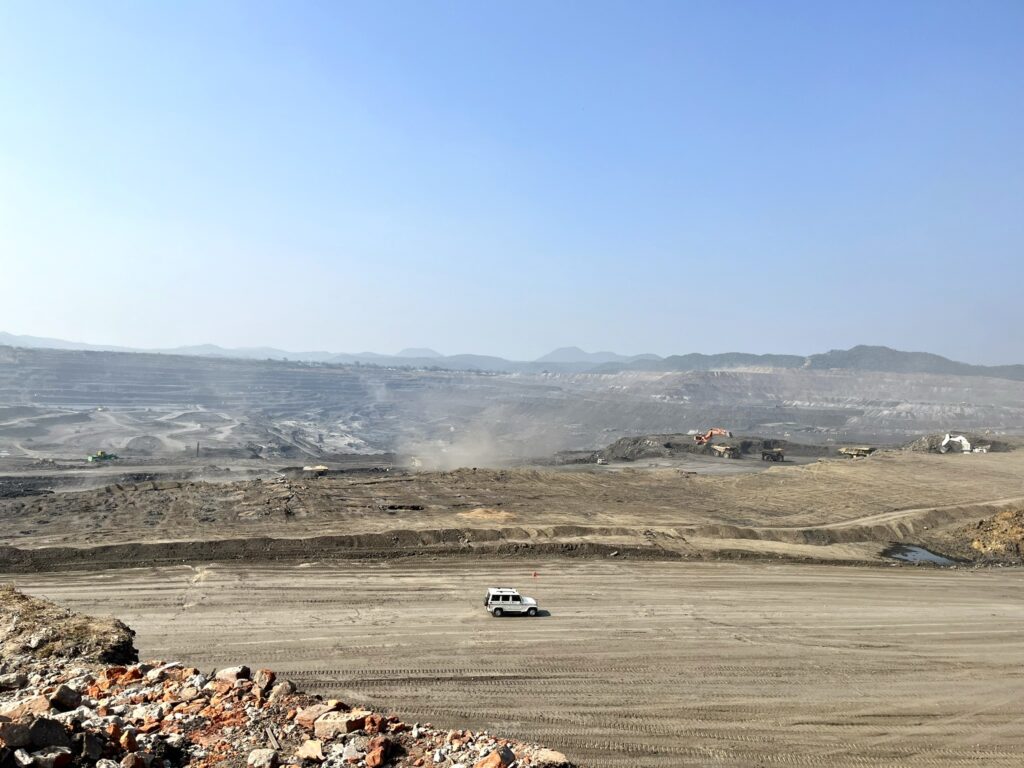
Protesters warn the proposed open-cast mining would devastate agricultural land, contaminate the Damodar River, and displace hundreds of families. They have blocked company officials from entering the village to conduct surveys, standing in front of vehicles and maintaining their protest site despite drone surveillance, leading to a tense standoff.
Over the past two years, Jharkhand Police has filed First Information Reports against more than 20 villagers, primarily based on complaints from Adani officials. Charges range from obstructing official work to serious allegations like “attempt to murder.” When Adani representatives attempt to enter villages with police escort, protesters intercept them, leading to confrontations that typically end with officials filing police complaints against the villagers. Several protesters were initially arrested but later released. Deepak Mahto recounted recurring confrontations: “Whenever the company officials and the police try to enter, we ask them why they are here. They abuse us and later file complaints against us.”
Historically, mining in Jharkhand has resulted in mass displacement with little to no compensation. Between 1981 and 1985, Central Coalfields Limited alone acquired 120,300 acres, displacing 32,750 families, while projects like the Damodar Valley Corporation and Bokaro Steel Plant uprooted thousands more. But unlike earlier state-led industrialisation, which at least offered some jobs, today’s corporate takeovers leave displaced families as landless wage labourers, forcing many into hazardous mining jobs or unstable urban work.
The Preamble to the Jharkhand Rehabilitation and Resettlement Policy, 2008, observes that with “more than 55% as Scheduled areas under the Fifth Schedule,” the region’s natural resource wealth has historically benefited everyone except those who sacrifice the most. “Natural justice demands that any development activity… should also benefit the project affected local people,” it states, before admitting the reality that displaced residents “have neither been properly rehabilitated nor resettled,” resulting in an “exodus… in search of livelihood elsewhere.”
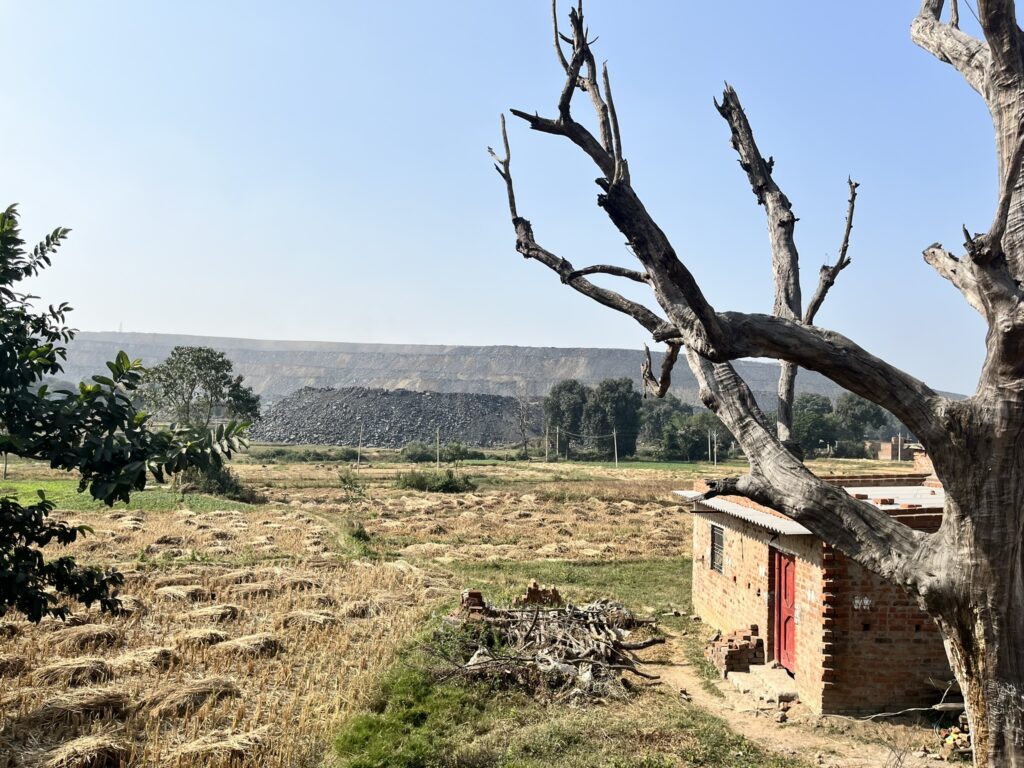
Patterns of mining impacts in Jharkhand
India’s coal mining landscape is undergoing a significant transformation, with the Modi government permitting private companies to conduct commercial coal mining for the first time since nationalisation of the sector. Several private entities, including the Adani Group, have secured coal blocks in Jharkhand, where the growing footprint of mining is reshaping the countryside. Besides, state-owned National Thermal Power Corporation (NTPC) has begun directly acquiring mines to fuel its thermal plants rather than relying on Coal India.
People of 19 villages were displaced for the Pakri Barwadih coal mines with the acquisition of 3,319 hectares of land by the NTPC, which started mining operations in 2016. Research shows major loss of agricultural and forest land due to the mining activities, whereas wastelands, including dumping and mining area, increased by four folds between 2019 and 2022. Further, the Barkagaon Reserve Forest also fell into the core and buffer zone of the area, as per an environmental clearance document of the project. The company and the government promised to ease the process: initial compensation offers of Rs 7 lakh per acre soon escalated to Rs 20 lakh, accompanied by assurances of jobs and rehabilitation, which invariably dissolved into silence. Meanwhile. some said they received as little as Rs 85,000 for nearly 4 cents of land.
The displacement in Nagdi village happened in 2023, as one village after the other was consumed by NTPC’s expanding mine and its buffer zones. Around 300 families were displaced, of which only three remain in the village. The other inhabitants have been scattered across resettlement colonies with sterile concrete environments devoid of soil, history, or any meaningful connection to the land. Munshi Ram, eighty years old, sits outside his abandoned house in Nagdi. “They gave us money for the land,” he said. “That is how they divided us.” The money is gone. The land is gone. And the promised jobs also vanished.
Nakul Mahto, a pastor from near Gondalpara, said that manipulative tactics are used by companies who try to acquire land there, such as Adani, NTPC and Thriveni: “They lure villagers with big money, but give them almost nothing in the end.”
Aktiri Khatoon, a widow with six children, was promised a house and job by NTPC in return for her land. However, she was fired from her NTPC factory job one and a half years ago, leaving her in financial distress. “We had land to farm before, but now it’s gone. All we ask is for the company to fulfil its promises,” she said.
The villagers told us that NTPC’s rehabilitation criteria exclude anyone who turned 18 after 2016, leaving many young people without homes or jobs. Seventy-year-old Ramzan Mia and his son Mohammad Ramzan lost seven acres of land. They were promised jobs, but have remained unemployed. “They [the company] said, ‘Give us the land, and we’ll give you a job,’” Mia recalled. “But now, they have excuses for why they can’t.”
Michael Levien, in Dispossession Without Development, explains such a situation simply: neoliberal land dispossession in India has primarily benefited private capital, leaving displaced rural communities worse off. Unlike earlier public-sector projects, recent land grabs create few jobs and deepen social inequalities.
Many of the Nagdi residents face severe health crises, with widespread cases of lung disease due to the fine coal dust. Water scarcity has also become a major issue. Ramni Devi said that there was a massive water crisis in the village with the available supply becoming undrinkable due to the open mining; the settling of coal dust particles has added toxic chemicals to the water. “We are putting our lives on the line here by staying back,” she added. Even those who relocated to the resettlement colonies complain of poor living conditions, including the octogenarian Ram.
While corporations extract resources under legal protection, thousands of displaced villagers have been forced into the informal coal economy. In the mining belt from West Bengal to Jharkhand, illegal coal extraction has become a means of survival. Although there is no up-to-date official data on illegal mining, a 2003-04 survey estimated that 2.5 million tonnes of coal was transported illegally; by 2012, this figure had risen to 3.7 million tonnes, as observed by Kuntala Lahiri-Dutt in The Coal Nation.
The cyclewallahs, men who ferry sacks of coal on bicycles, travel miles along dangerous roads to sell their loads in distant towns. The state condemns them as criminals while allowing multinational corporations to profit from Jharkhand’s coal. The Australian company White Industries and Canada’s Met-Chem entered the state’s coal sector in 1989 and early 1990s. In projects such as Rajmahal and Piparwar, these foreign corporations have amassed huge profits while the indigenous people remain landless and impoverished.
The people of Gondalpara still believe they can stop the land acquisition, their resistance resembling a wall against a tide that has swallowed so many before them. But Vikram Kumar, a lawyer from Hazaribagh, who has seen many such fights, said that as much as he wants to be enthusiastic, historically people have lost to these companies. “I will be rooting for the protesters because this is my homeland as well, but sadly and depressingly, this beautiful land will see the same fate as Dhanbad,” he said.
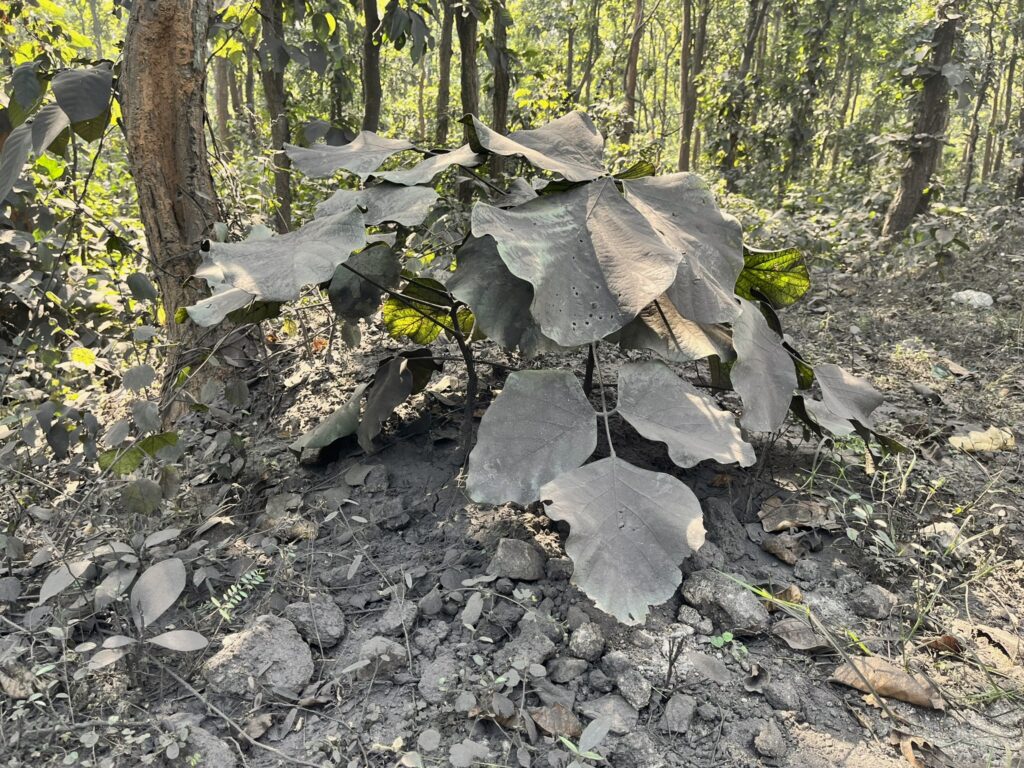
Environmental and social costs of mining
Jharkhand is among India’s most mined states, with Hazaribagh, Chatra, Palamu, Rajmahal, Dhanbad, and Ranchi all suffering from severe environmental degradation. Despite India’s push for renewable energy, coal remains the dominant energy source, with Modi celebrating a historic milestone in April 2024—crossing one billion metric tons of coal production. India’s coal demand rose 10% in 2023, the highest global increase. However, the country’s thermal import saw a drop in 2024 and 2025, suggesting a domestic increase in supply, including that from private mining.
The ecological impact of coal mining in Jharkhand has been devastating, as widely reported. The Damodar River, once a lifeline for local communities, now receives over 40 tonnes of coal washery waste daily, making it one of India’s most polluted rivers. Similarly, the Badmahi River, which flows near Gondalpara, is threatened by industrial wastewater.
Devnath Mahto, a senior protest leader at Gondalpara, emphasised the environmental significance of the region. The area is rich in biodiversity and serves as a wildlife habitat. “It is important to understand that we are living amidst nature where the whole area is surrounded by hills with lush green forests. This is a place where different kinds of animals take up habitat. We have beautiful land and rivers,” Mahto said. Speaking of the Damodar River that flows through the village, Mahto explained that the river is a lifeline for 15 villages. “If this river is ruined, nothing will be left. When we see all these factories, it causes us tension.”
Mining has also led to widespread deforestation. The North Karanpura coalfields, home to some of Jharkhand’s richest farmlands, have seen vast stretches of land rendered infertile due to open-cast mining. In Piparwar, 289 hectares of reserved forests have already been cleared, with many more under threat.
Beyond land and water, coal mining has made the air unbreathable. In Pakri-Barwadih, hundreds of trucks transport coal daily, coating trees and crops in thick black dust. Even efforts to reduce dust pollution, such as NTPC’s 21-kilometre-long conveyor belt, have been abandoned; activists allege the belt has not been used for years.
While visiting several coal dumping grounds, it becomes apparent that mining activities have had a devastating impact on former villages. The Pakri Barwadih mine in Barkagaon presents a haunting contrast between lush green landscapes and mountains of coal. Rajesh Kumar Yadav, a displaced resident from Churchu village, reflected: “A few kilometres away, there are beautiful forests. Here, it’s nothing but coal dust.”
Yadav is now unemployed and has joined hands with the Bajrang Dal hoping to find justice for the displacement he and so many from his village faced. The Bajrang Dal is a Hindu nationalist group known for its vigilante actions. “There might be some things on which I don’t agree with my Bajrang Dal fellows, but they assured me they will raise their voice for us and that is something we need,” he said. Demanding justice, Yadav said they went to all officials, knocked the gates of the court and even protested in 2016 when the company and officials “forcefully started dumping coal”.
In 2016, Yadav’s village was gradually turned into a coal dumping ground for Pakri Barwadih without consulting the gram panchayat. Promised compensation and rehabilitation never fully materialised. Further, protests by villagers were met with violence, and they were forcibly relocated to a company-built colony. The living conditions there are poor, forcing many to pay rent elsewhere.
“The Jharkhand Police at the time [2016] had killed one person and injured many when they fired on the protesting villagers. Despite such intense protests, we lost and were displaced,” Yadav said.
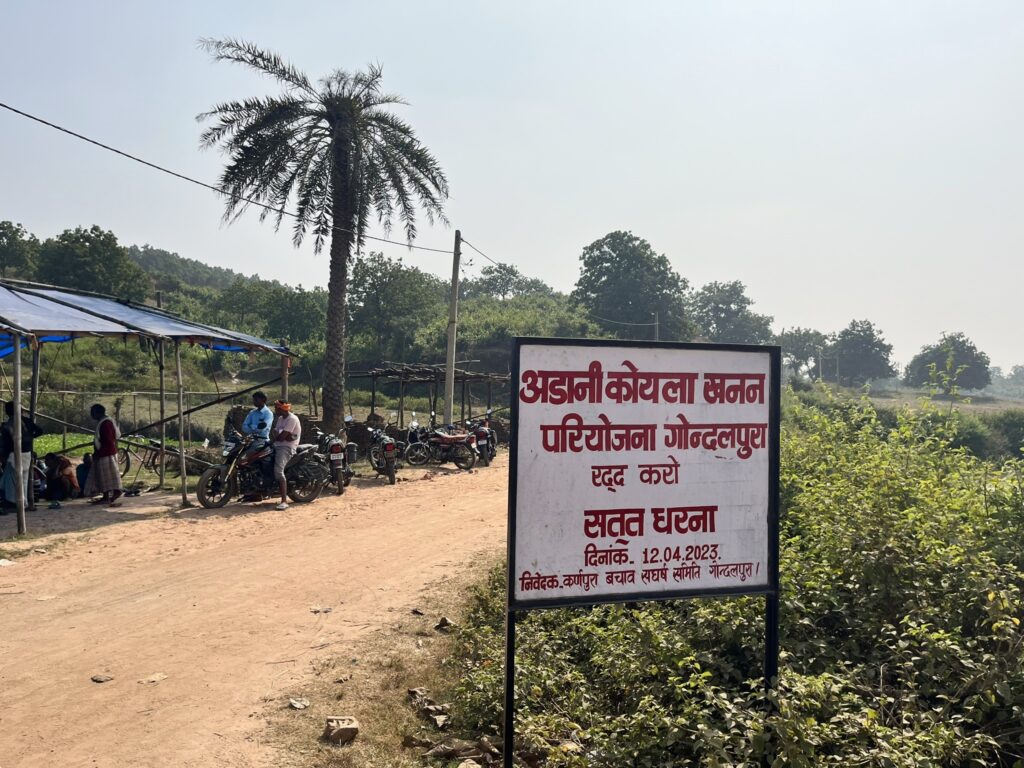
For the people of Gondalpara, this fight is not just about livelihoods; it is about identity. Their land is tied to centuries of tradition, with sacred sites and historical ruins standing as reminders of a past that is now under threat. Merely a couple of kilometres away from the protest site, are the ruins of an ancient Buddhist temple. The site is said to be hundreds of years old, and has now become a prayer space for even Hindus. “This only shows how old and vibrant the history of this area has been. It is said that these temples used to be huge and Buddhist monks used to live here some centuries back. These are not just make-believe but are recorded historical facts,” said Mithlesh Dangi, an activist who has researched on these villages, and is part of the ongoing protest.
Anita Devi, a 30-year-old farmer from Gondalpara who has nearly three acres of farmland, asked pointedly, “If our land goes to Adani Enterprises, then where will our future generation go?”
The protest in Gondalpara continues. From sit-ins to direct confrontations, their struggle represents a broader movement against unchecked industrial expansion at the cost of human rights and sustainability.





